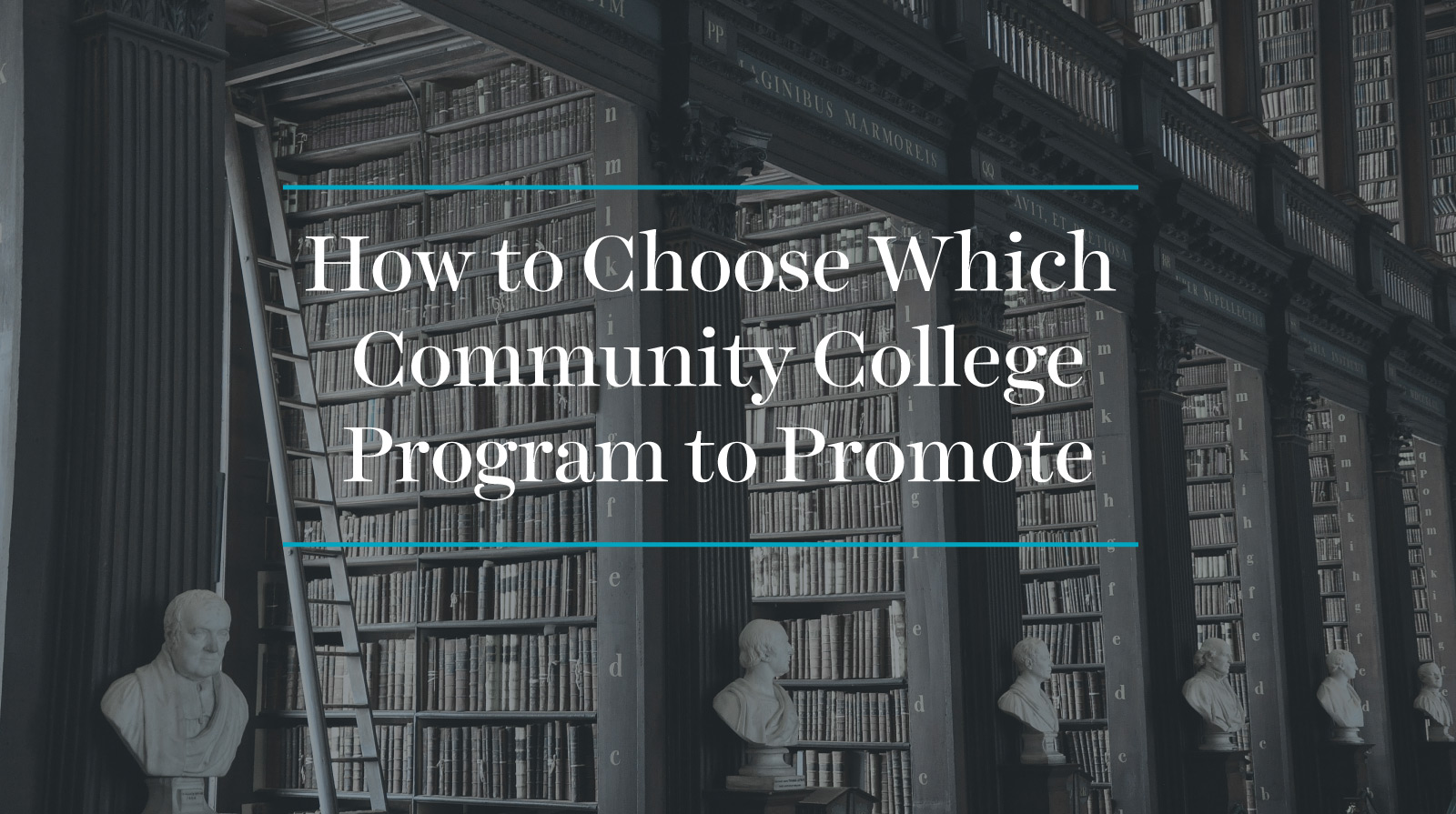Making strategic content marketing choices will help your message spread further.
When the community colleges we work with first begin using CareerFocus, one of the frequent questions we hear is about what content they should cover in their campaign. After all, most community colleges have several career programs to choose from, as well as a variety of specialized certifications, not to mention dedicated staff and special student aid services. Taking all the options into account, it’s no wonder so many don’t know where to begin.
Of course, many of the marketers we work with are old hands at their community college, and understand their programs and services inside and out. Because of this, a marketing campaign that allows them to raise the profile of these programs has immediate appeal, as they can instantly identify which programs they want to highlight.
Other marketers who have a stronger background in content marketing are already familiar with how to organize a campaign. However, they may be less familiar with their college’s services, or may not know what kind of content will have the most appeal to their audience.
Finally, some of the marketers we work with are new to both content marketing and community colleges alike. For them, the concept of raising enrollment through information-based mailings and social media posts is a new one, and selecting the best material from our content archive can be overwhelming.
Fortunately, we have the experience to help. An issue of CareerFocus usually features several articles, with one program in the headline spot. If you’re struggling to make the most strategic choice, here’s our top considerations.
Balance local needs against national trends.
Community Colleges across the country offer a variety of programs designed to advance careers. However, the opportunities for these careers vary from county to county, and while they frequently align with national trends, it’s always important to consider them in your local context.
Our content library contains many articles that are pertinent to national employment trends. But it’s always helpful to prospective students to see how these articles apply to their local prospects. When you select an article, also look for statistics in your town or in neighboring counties that will support the employability of that kind of degree or certification. Doing so may very well give your readers the accurate, up-to-date information they need to start planning their first steps toward post-secondary education.
Learn about your target demographics.
Community colleges attract students from diverse walks of life. This is one of their greatest benefits, but it can make marketing tricky. With so many different kinds of students to appeal to, how can you select material that will be relevant to all of them?
The short answer is: don’t. Instead, learn about the needs and interests of specific demographics, and speak to them directly. That may mean your cover issue features a story aimed to bolster your nursing program, while another story discusses career prospects for older students who want to switch careers. Either way, you draw in more students by speaking to them as smaller groups than by appealing to everyone all at once.
Of course, the demographics you speak to will depend a lot on your area. You may have more dual-enrolled students if your college is located in the same city as a larger university. Or, you may find that you have a lot of younger students who attend from the nearby high school. If your demographics are particularly strong in that area, you may want to try a separate campaign, such as our SmartStart program, to target them more specifically.
Give struggling programs a marketing boost.
Not every program is successful, and when one struggles to draw in enough enrollees, it may make sense to pull the plug on it. However, before doing so, many community colleges would be well served by devoting some marketing resources toward promoting that program. After all, it may be that public awareness is low, and if more students knew of the program, more would be interested in signing up.
A feature spot in CareerFocus, or on your social media channels, can help rejuvenate a struggling course. At the very least, it will help you decide whether the course is worth continuing.
Think about people rather than programs.
One final strategy is to focus your stories on people or departments rather than programs. Many students say that a major factor in influencing their decision to enroll in a career program was seeing someone similar to themselves who had also enrolled. For a veteran, a single mom, or a student with a disability to share their story can serve as an inspiration for others to enlist as well.
Similarly, many faculty members often feel their work goes underappreciated—particularly in a community college environment. A small story of a few paragraphs about them or their department, when paired with a larger article from the content library, can personalize your story and build morale among your staff.
Choose stories that inspire you.
Finally, it’s worth remembering that the stories that inspire you are likely to speak to your students as well. If you find an article that represents your community college or which you feel would speak to your students, that’s a strong indicator in itself that it’s an article worth sharing.


